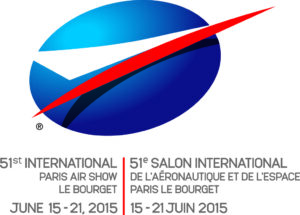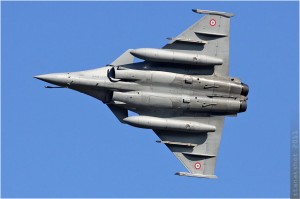Douglas Barrie knows aerospace. He was the European mastermind of Defense News when I was editor and now he works for the respected International Institute for Strategic Studies. The core of his job there is analyzing global air power capabilities for IISS’ flagship publication, Military Balance. He’s authoritative. Here he writes about the Paris Air Show and the very uncertain state of Europe’s global air power business. Read on. The Editor.
LONDON: Recent events in Iraq, Libya, Russia, Syria and Yemen have sharpened the fundamental questions European nations face as they consider medium- and long-term force structure and equipment needs.
In the short term, the focus for much of Europe’s defense aerospace sector is on understanding fully the cause of the crash of an Airbus A400M, that lead to the death of four of the six crew. It served as a sad reminder that risk remains an inherent element of aerospace development.
Air campaigns of the last decade have shown the flexibility, responsiveness and breadth of roles of air power. These wars, however, have also sustained a debate as old as air power itself: can the air arm alone deliver strategic outcomes, or does it remain far more effective in concert with ground and, when needed, naval forces. The NATO operation in the Libyan Civil War in effect supported the anti-Gadaffi forces, appearing to provide a decisive advantage. This year’s Saudi-led coalition air strikes against Houthi insurrectionists in the Yemen has provide respite for government forces, but the air campaign has failed to force the Houthi to the negotiating table. It has resulted in civil deaths and injuries, which beyond being tragic for those affected, risks eroding the legitimacy of the coalition bombing missions.
 In Iraq and Syria, meanwhile, US-led air strikes have continued against ISIL (aka Islamic State aka Da’esh) forces. The air campaign has forced ISIL to change its tactics, reducing its mobility and the ability to mass forces. It has also hit at key sources of ISIL revenue such as oil. So air power has provided Iraqi government forces with some respite, but, as the May debacle in Ramadi showed, these forces are not always led well and their willingness to fight is often overmatched by ISIL. The limited impact of the air effort has been criticised by some, but the air campaign in and off itself was unlikely to result in ISIL’s defeat.
In Iraq and Syria, meanwhile, US-led air strikes have continued against ISIL (aka Islamic State aka Da’esh) forces. The air campaign has forced ISIL to change its tactics, reducing its mobility and the ability to mass forces. It has also hit at key sources of ISIL revenue such as oil. So air power has provided Iraqi government forces with some respite, but, as the May debacle in Ramadi showed, these forces are not always led well and their willingness to fight is often overmatched by ISIL. The limited impact of the air effort has been criticised by some, but the air campaign in and off itself was unlikely to result in ISIL’s defeat.
Alongside air-to-surface operations in permissive air environments such as the campaign against ISIL where there is little or no counter-air threat, renewed thought is now being given to the demands of operations in contested air space. This would either be in the shape of war with a near-peer competitor or in operations where the opposition has acquired and is capable of operating high-end threat systems such as surface to air missiles and fourth-generation combat aircraft and associated weapons (in Pentagon speak, this is the anti-access/area denial — A2/AD environment). NATO nations are being asked also to focus again on the air defense role because of greater and more assertive Russian Air Force activity, though it remains far from the levels at the height of the Cold War. Meanwhile, Washington is having to review continental air defense against a possible conventional threat.
Take all that into account and key providers of European air power face challenging and fundamental choices as to the nature of the capabilities they will develop, buy and sustain beyond the present generation of combat and special missions aircraft. First, there the basic choice as to how long keep the present types of fighter aircraft in service, and the types of systems and weapons that would best serve to ensure there continuing suitability and survivability across the threat spectrum intended to be addressed. This will also determine the continent’s industrial longterm footprint in the defense aerospace arena.
For some, the 2015 Paris Air Show brings with it the security of a considerably healthier near-term order book, even if the ‘big prize’ eluded them 24 months ago. France’s Dassault had yet to conclude an export order for Rafale combat aircraft, though it had been chosen as the preferred bidder for India’s 126 aircraft Medium Multi-role Combat Aircraft program. Since the beginning of this year it has booked orders for 24 aircraft for Egypt, 24 aircraft for Qatar, and moved a sale – if not the big sale – to India. After three years of negotiations intended to agree the overall military-industrial package providing for the license build in India of 108 of the planned 126 MMRCA order, Delhi and Paris instead suddenly announced in April that they would proceed with the purchase of 36 Rafales directly off the French production line.
Even taking into account the demise of the Rafale/MMRCA deal, garnering orders for 84 fighter aircraft since the start of the year marks a considerable reversal of fortune for Rafale in the export arena. The healthier order book provides Dassault with greater leeway on production rates which are running presently at one aircraft a month. An extended production run also keeps the line alive to address future export opportunities.
Dassault’s success came at the expense of other European manufacturers. The four-nation Eurofighter Typhoon was proposed to meet the initial requirement in Qatar, and it remains in contention should a second batch of fighter aircraft be purchased. In the same region UK-led discussions with the United Arab Emirates over the purchase of Typhoon failed to secure a sale, after showing promise. France is again now proposing the Rafale to the UAE. In Kuwait The Typhoon and the Boeing F/A-18E/F Super Hornet at least are being considered as a replacement for the air force’s F/A-18C/Ds, with contradictory signals as to which is preferred.
In the UK, the ongoing Strategic Defense and Security Review will consider what to do about the Royal Air Force Typhoon fleet’s notional out-of-service date of 2030. This will in all probability see the Tranche 2 and Tranche 3 aircraft’s operational life extended well into the 2030s to help maintain overall combat aircraft fleet numbers. If that does not happen, then by the Royal Air Force’s only combat aircraft would be the F-35B by 2031. The present procurement numbers for the aircraft do not indicate this.
Beyond 2030, the RAF would also begin to introduce a uninhabited combat air vehicle (UCAV) into the inventory. London and Paris are executing a two-year feasibility study into the technologies required for the development of a low-observable UCAV optimised for the air-to-surface role. The UCAV work stems from the 2010 Lancaster House treaties on defense cooperation between France and the UK and could lead to joint development of what is known as the Future Combat Air System.
That feasibility study will conclude likely in mid-2016, with the decision on whether to pursue a joint programme to follow. In political terms at least this could pose a problem in that the British Government is planning to hold a referendum on whether to remain a member of the European Union. Whether Paris would be comfortable committing to a high profile defense collaboration prior to a UK decision on EU membership is a matter for conjecture.
Intriguingly, French officials have suggested that technology from the FCAS programme could also be applicable to a crewed platform. While none of Europe’s traditional defense aerospace nations have a formal project to develop a crewed combat aircraft beyond the present generation, or in the case of the participating nations beyond the F-35, there are signs that assumptions in this regard are being reconsidered. Beside the French comments, London is also re-examining its baseline with regard to its options to meet its Future Combat Air Capability force mix. The UK’s 2005 Defense Industrial Strategy suggested the F-35 would be the air force’s last crewed combat aircraft. This conclusion is now being revisited as part of wider work.
Alongside UCAV research and development France is once again undertaking study work to consider how to meet Medium Altitude Long Endurance needs in concert with Italy and Germany. A MALE project had been identified as an area of potential collaboration with the Lancaster House Treaties. Pressure on funding and near-term needs meant that the UK decided to focus on the MQ-9 Reaper, while Paris decided to acquire the General Atomics UAV for its short-term requirements. Within the Anglo-French context the UCAV project was to be the standard bearer for UAV work. Exploratory work on a collaborative MALE programme between BAE Systems and Dassault, building on the former’s Mantis technology demonstrator, was thwarted as a result of the choice of focus.
While there is consensus that the future combat air mix will include crewed and uninhabited platforms, the ratio of the mix, the nature of the platforms, and the types of weapons, kinetic and directed energy all remain open to debate. The impact that these choices will have on the European defense aerospace sector, and the weight given to this in considering whether to ‘make or buy’, also remains open to discussion. There is no agreement over the extent to which governments should continue to support national or European research and development and manufacturing capacity or the mechanisms to achieve this. The next few years will determine fundamentally the future of European defense aerospace and we don’t yet know what it will be.
Connecticut lawmakers to grill Army, Lockheed about job cuts at Sikorsky helicopter unit
“The Connecticut delegation has questions about why, with that [FY24] appropriation in hand, this happened,” said Rep. Joe Courtney, D-Conn.





























